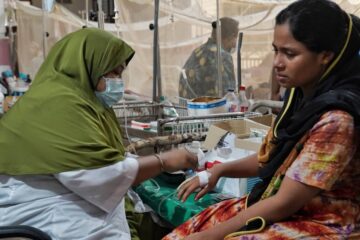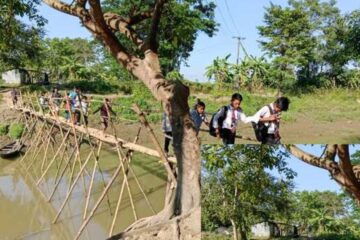The government has undertaken a project to ensure an uninterrupted, safe, and sustainable water supply throughout the year in Khulna city and its surrounding areas, particularly during the dry season when salinity in surface water rises sharply.
Local Government Division will implement the project titled Khulna Water Supply Project (Phase-2) through the Khulna Water Supply and Sewerage Authority (KWASA) at an estimated cost of Tk2,598.59 crore between July 2025 and June 2030.
Of the total, Tk1,821.81 crore will come as a project loan and Tk776.78 crore as grant assistance from the Asian Development Bank (ADB).
The project, supported by a $150 million loan and a $4 million grant, aims to expand piped water services to 1.78 million residents in Khulna city, according to ADB.
It seeks to transition the city towards sustainable surface water use and reduce dependency on saline-prone sources during the dry months.
The project will introduce smart water supply management, expand supervisory control and data acquisition (SCADA) systems, and reduce non-revenue water.
A technical assistance grant will also fund studies on artificial recharge and groundwater management.
Negotiations for the ADB loan were completed on July 15, and the loan confirmation has already been received, according to the Economic Relations Division (ERD).
It will also expand piped water coverage to newly incorporated areas under the Khulna City Corporation, such as Labancara, Harintana, and Aronghata.
The project includes construction of 300 kilometres of new distribution pipelines with district metered areas and household meters, upgrading of existing networks in 63 metered areas, construction of new production wells, pumping stations, and reservoirs at Samantoshena and Afilgate, expansion of the Samantoshena Water Treatment Plant’s capacity from 110 million litres per day (MLD) to 135 MLD, construction of a 38-kilometre clear water transmission main and a 12.5-kilometre raw water transmission line from Afilgate to Mostofa More, building a new 385,000 cubic metre impounding reservoir at Samantoshena, along with upgrades at Afilgate and Mostofa More.
To promote sustainability, the project will install an on-grid solar power generation system to run water facilities and develop a smart SCADA-based monitoring system for real-time oversight of supply operations.
Khulna currently depends on both surface and groundwater sources, but during April and May, the Madhumati River, the city’s main surface source, becomes saline due to reduced flow and climate impacts.
Salinity levels can rise from the acceptable 600mg per litre to as high as 2,600mg per litre, severely affecting potable water availability.
Climate experts have warned that prolonged dry seasons caused by climate change may worsen the crisis in the years ahead.
The Cities Development Initiative for Asia (CDIA), with ADB’s financial support, carried out the project’s feasibility study through a consortium comprising TEC International Co Ltd (Japan), PADECO Co Ltd (Japan), and New Vision Solutions Ltd (Bangladesh).
As per the year-wise expenditure plan, the government will spend Tk181.46 crore in FY2025–26, Tk426.38 crore in FY2026–27, Tk758.31 crore in FY2027–28, Tk715.28 crore in FY2028–29, and Tk517.15 crore in FY2029–30.
According to the Planning Commission, once completed, the project will ensure a sustainable, year-round supply of safe water for Khulna city, reduce groundwater dependency, enhance climate resilience, and promote environmentally sustainable water management in one of Bangladesh’s most climate-vulnerable regions.
People, including farmers in Khulna, are grappling with a worsening salinity crisis that is affecting agriculture, drinking water, and livelihoods in the region.
Experts say the situation has intensified in recent years due to climate change, sea-level rise, and upstream water diversion.
High levels of salt in soil and water have made it increasingly difficult for farmers to cultivate traditional crops such as rice and vegetables.
Many have switched to salt-tolerant crops, but yields remain low, impacting household incomes and food security.
Local communities also face a severe shortage of safe drinking water as groundwater and surface water sources are contaminated by salinity.



